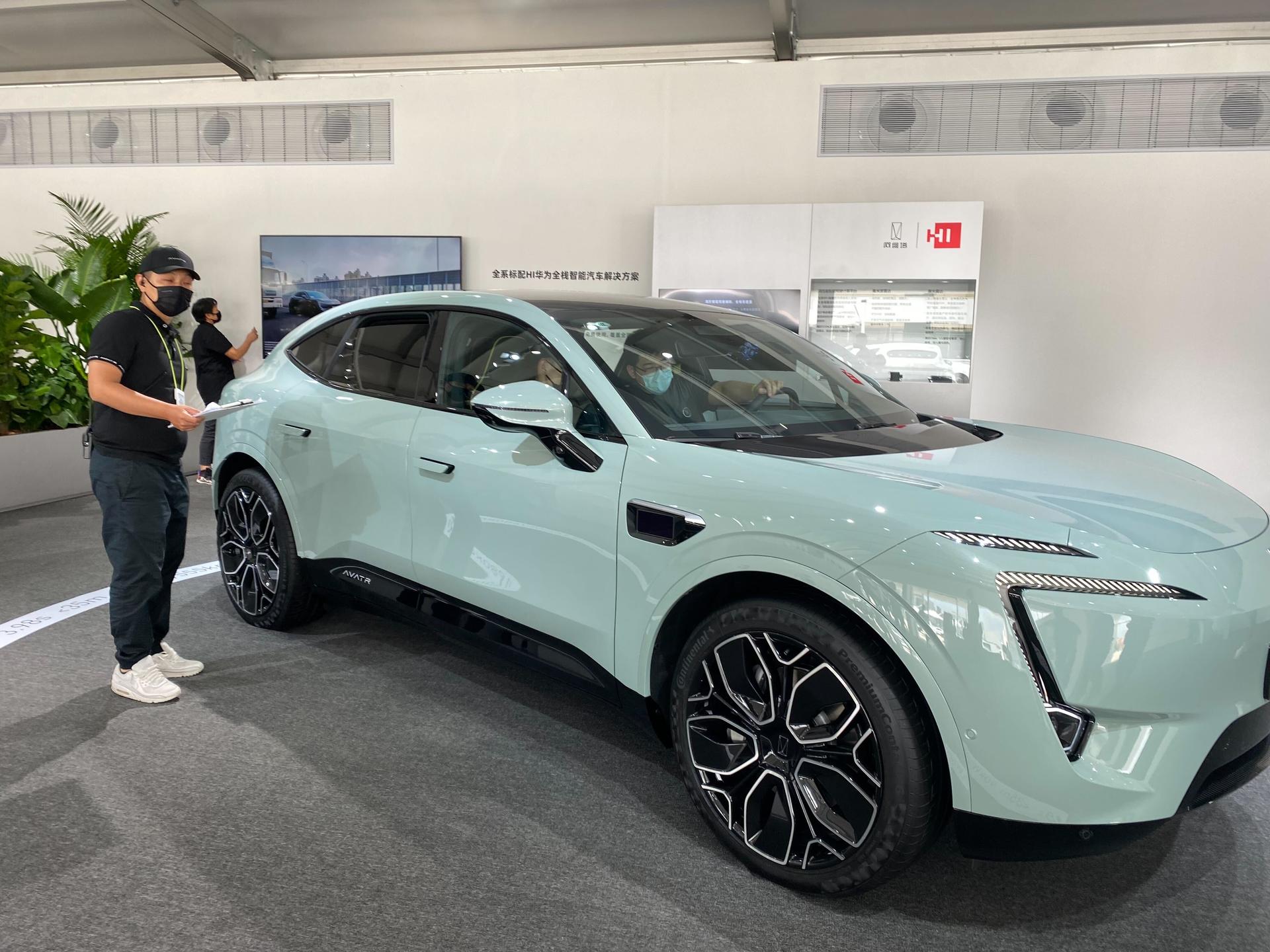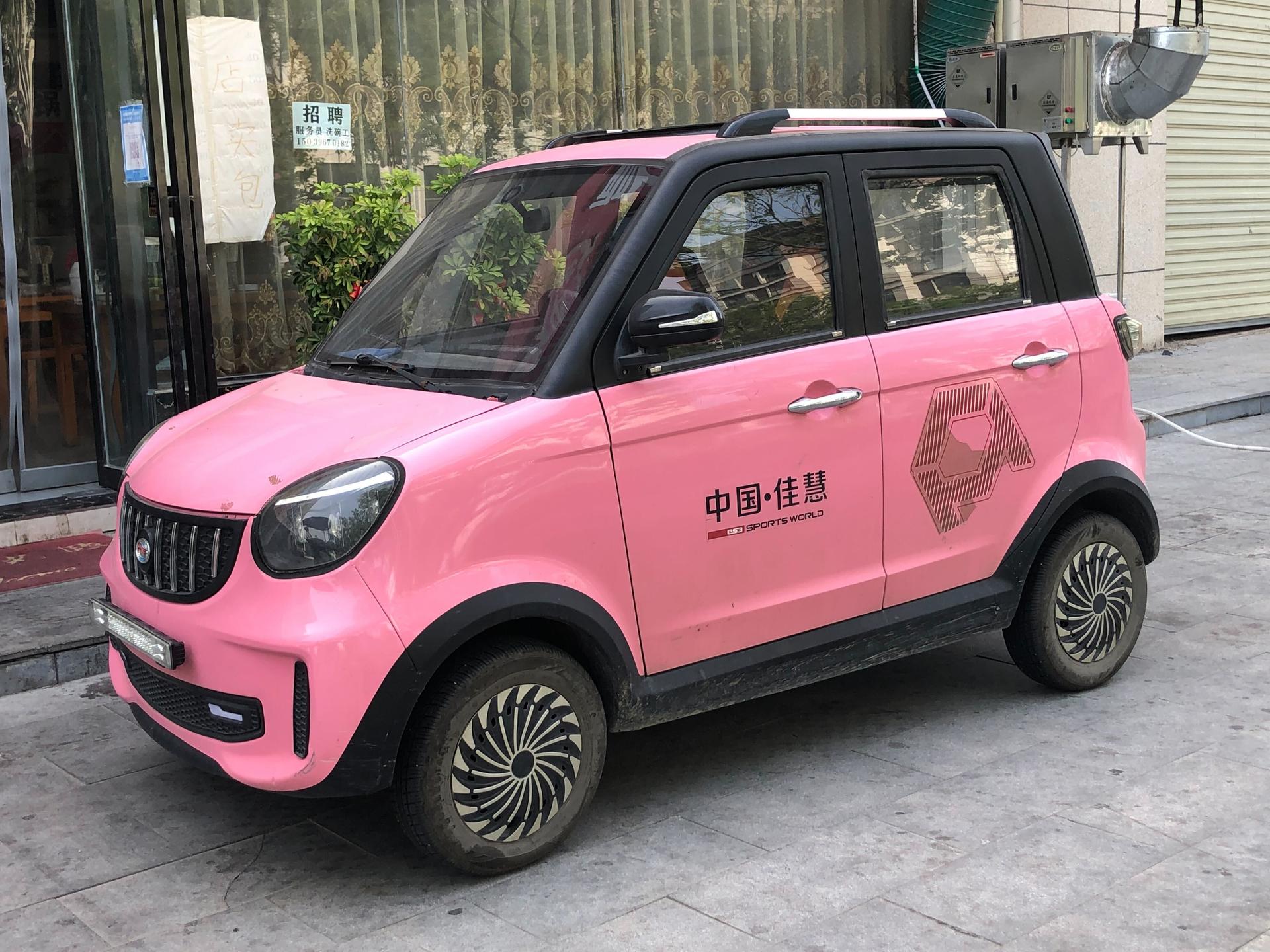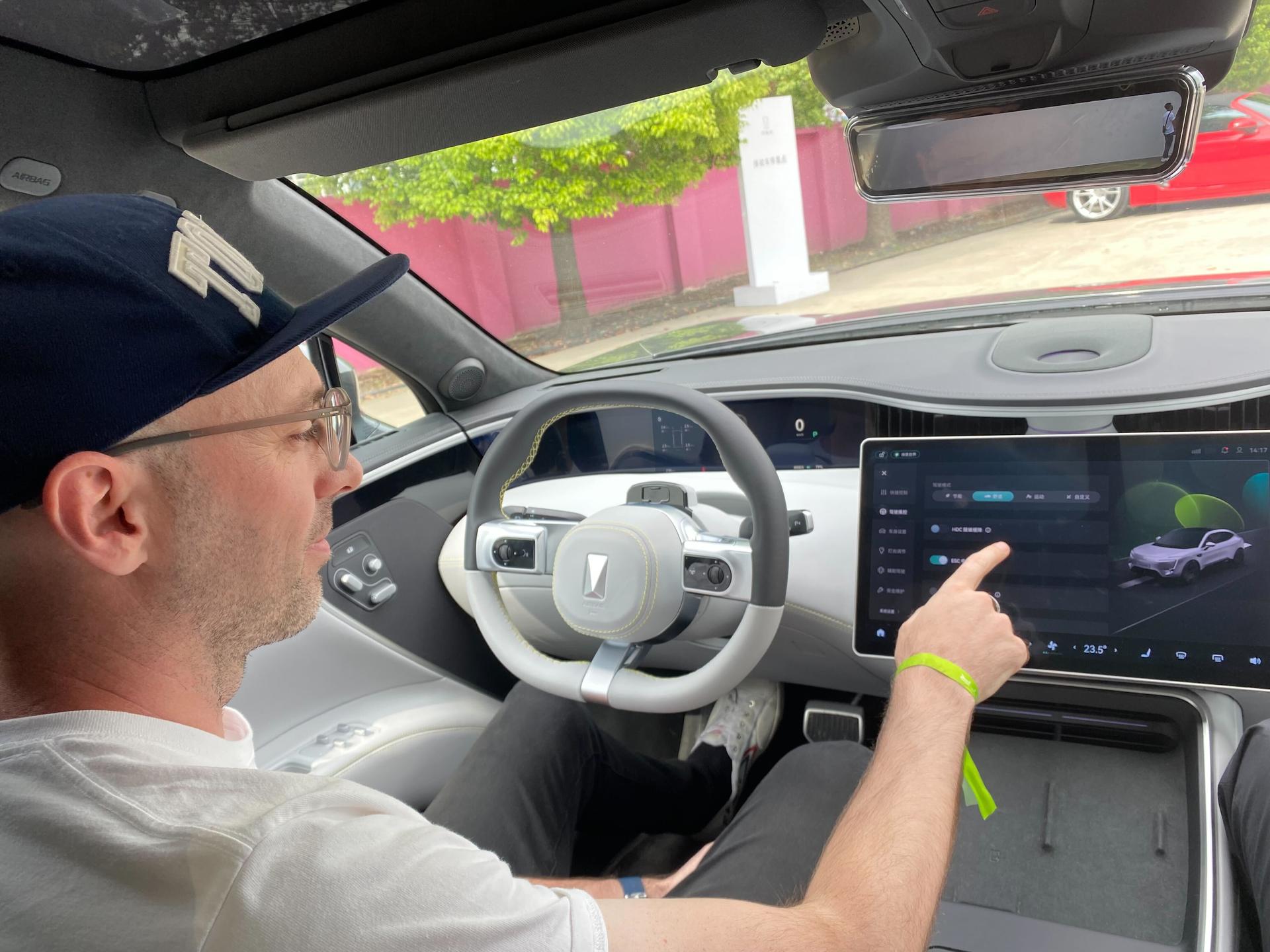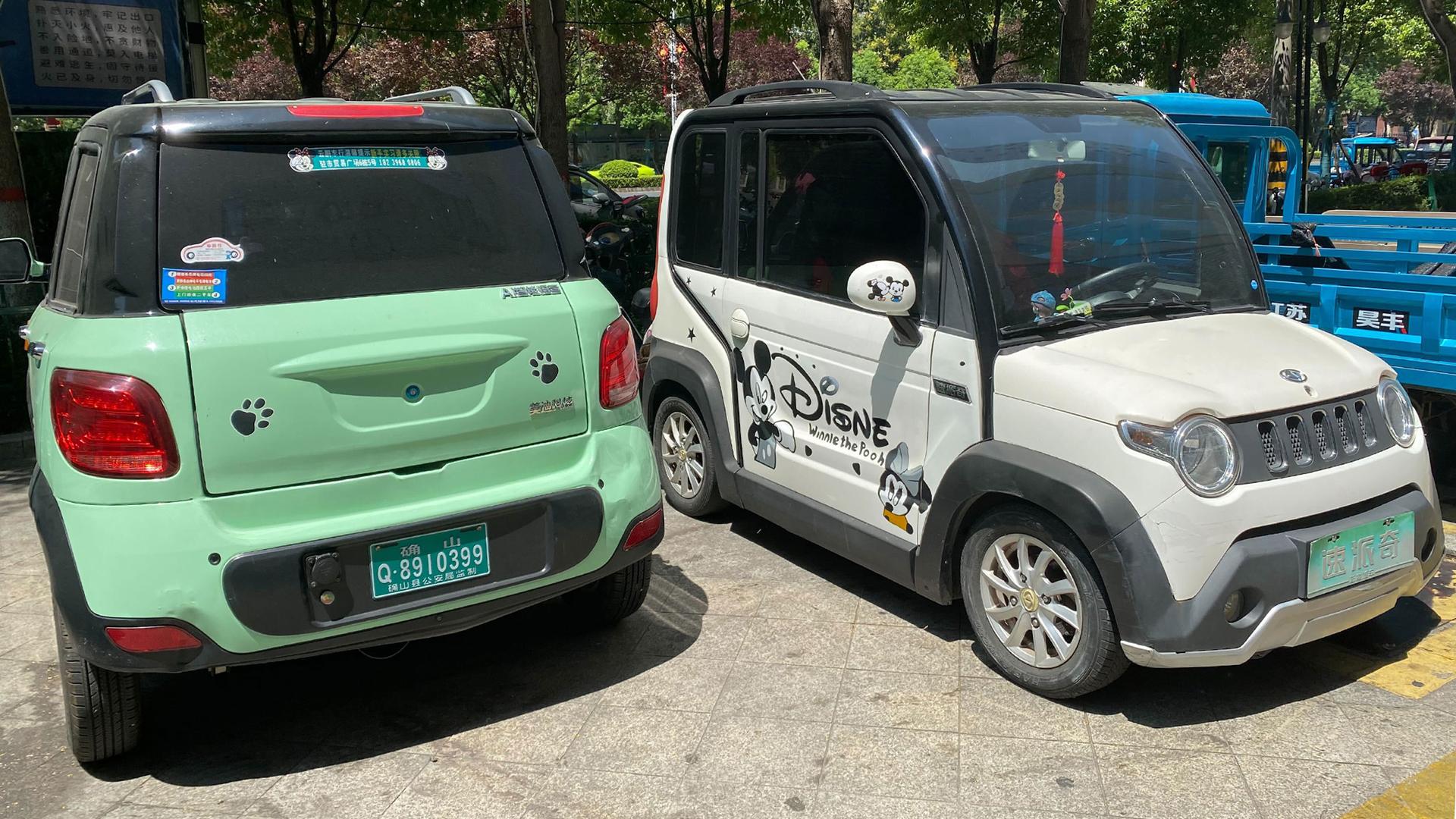Electric vehicles are gaining popularity across China as govt creates incentives
Jenny Liu is a schoolteacher in Zhumadian in central China. With about 7 million people, it’s still considered a small city. When she’s not working, her days are spent on the go, shuttling her kids around town.
Liu drives a Seahorse, a Chinese brand mini-electric car.
China started investing in new electric vehicles (EV) years ago. This year, about 25% of new cars sold there are electric.
Liu told The World that she’s usually driving around in her electric car from morning until night.
One day, her first stop was dropping off her daughter at kindergarten.Next, she took her 12 year-old son to his tutoring session and picked up some groceries. In the afternoon, it was more pick-ups, drop-offs and errands.
“Everyone here has an electric car,” she said. Liu’s family actually owns three electric vehicles — the mini-electric car, an electric scooter and a three-wheeled golf cart. They’re all for short trips within the city.
They also own a gas-powered car, but Liu said they only use it for long-haul trips outside the city.

“It’s just too expensive to drive,” she explained. The mini-EV costs her family less than $4 a week to charge up. Gas and parking would cost at least five times as much.
Across Chinese cities, electric cars can be seen everywhere, and can be spotted by their green license plates. Tiny mini-EVs are especially popular in smaller cities. They’re even smaller than the SmartCars seen on roads in the US. And these mini-EVs are customized with colors and decals — for example, some cars are decorated with Mickey Mouse, Hello Kitty or the black-and-white splotches of a dairy cow.
Zhang Bo, 32, owns a shiny silver Wuling Hongguang, which was the best-selling EV in China, a Chinese joint venture with GM. He uses his car to commute to work.
“It’s really convenient for city driving,” he said. It’s also budget-friendly. This model goes for under $5,000.
Yang Jian, a journalist who writes about the car industry in China, said that government subsidies have been a big reason for the EV market’s success, but he senses that it is now growing even stronger because buyers are interested in the cars themselves, not just the subsidies.
“Now there is a real demand for EVs, especially among the young population.”
“Now there is a real demand for EVs, especially among the young population,” he said. “They really like the car, from the exterior to interior to [its] performance. They like to try new things.”
And there are plenty of options to try, for every budget, from tiny, cheaper models all the way up to luxury cars made by Chinese and foreign automakers.
Bill Russo is a car industry expert in Shanghai. He said that the range of options is key to China’s EV success.
“If the Chinese EV market were an ice cream shop, it would be Baskin Robbins,” he said. “You know, 31 flavors. There’s basic EVs, midmarket EVs, and then there’s more premium [ones with] more technology. I call them smart EV offerings — even some high end brands, like the HiPhi — which is selling an EV that is more than $100,000.
In the coastal city of Shanghai — a city of 25 million people — you can see the full range of electric vehicles on the roads, from electric scooters and electric buses, all the way to Teslas and other luxury cars. Hart Yang, 24, is a physical education teacher at an elementary school, and like many people in China from his generation, he’s the first car owner in his family. He bought a black Tesla Model 3.
“I chose an electric car mostly for the free license plate,” he said. In Shanghai, the cost of a license plate alone is more than $13,000, Yang explained. But electric and hybrid car buyers in Shanghai get a green license plate at no cost.
That perk will be taken away from hybrid car buyers at the end of this year, but the Chinese government has signaled it will continue to support the EV car market into 2023.
Tesla, which has a factory in Shanghai, is a popular EV car purchase in bigger cities. But Chinese brands are competitive, with names like Future and Build Your Dream. High-end Chinese EV makers are tapping into an aspirational market.

At a recent luxury car event on the outskirts of Shanghai, people were milling around an Avatr 11. It’s a high-tech collaboration between Changan, one of China’s biggest car companies, and Huawei, the mobile phone company. The car sells for nearly $50,000.
Elliot Richards, who makes YouTube videos about Chinese electric cars, said that for top-end electric car buyers here, it’s all about the technology.
“Chinese consumers think that this is like a mobile phone purchase,” he said. “They just change it every six months into the new technology, like an iPhone. Let’s drive this for six months, enjoy it, sell it. Get the new model from another company.”
The model he’s driving doesn’t require a key. You use your phone to unlock the doors. The car is full of perks: three large screens on the dashboard and the backseats even feature back massagers. Cameras and sensors are positioned throughout the car.

When the onboard computer senses its passengers are in a happy mood, an automated woman’s voice offers to put on some upbeat music and lighting inside the car.
These high-tech features will eventually be standard in most Chinese EVs, Richards said.
Electric cars in China benefit from a strong infrastructure that supports the industry. In Shanghai, there are 109,000 public charging stations.
“There are so many,” Richards said. “And if I go further outside of Shanghai, I know the motorway network, every service station has chargers. It’s so easy that I didn’t even consider it a problem in China.”
But others find it more difficult to drive electric cars on long-haul trips. Hart Yang, the Tesla owner, said he ran out of power for his car on a trip into the mountains several hours away from Shanghai. The remote rural area he traveled to was not well equipped with charging stations, so he had to come up with an alternate solution.
Outside of China’s wealthier coastal cities, though, many people still rely on China’s extensive rail network or gas-powered cars for longer trips.
The Chinese government has announced that it is investing in new charging stations for rural areas across the country, in the hopes that a stronger charging infrastructure will pave the way for Chinese drivers to go all in on electric.
